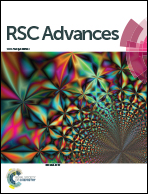Percolative silver/alumina composites with radio frequency dielectric resonance-induced negative permittivity
Abstract
The percolation phenomenon has great significance for multi-component materials, especially for the preparation of high-k composites. At present, most research focuses on composites below the percolation threshold because the high filling fraction usually results in enhanced losses, which are undesirable for high-k applications. However, it should be noted that lossy materials also may have huge potential applications in microwave absorbing, electromagnetic attenuation and shielding fields, etc. Therefore, it is of interest to clarify the dielectric behaviors of composites beyond percolation. Herein, the dielectric properties of silver/alumina composites beyond percolation are investigated. Interestingly, metal–insulator transition, capacitive–inductive transition, and radio frequency dielectric resonances appear along with the percolation phenomenon. The interrelationships between these phenomena are discussed. The mechanism of the radio frequency dielectric resonance-induced negative permittivity is discussed in detail. Clarification of the dielectric properties of conductor/insulator composites beyond percolation has great significance for the development of novel dielectric materials with fascinating properties and applications.


 Please wait while we load your content...
Please wait while we load your content...